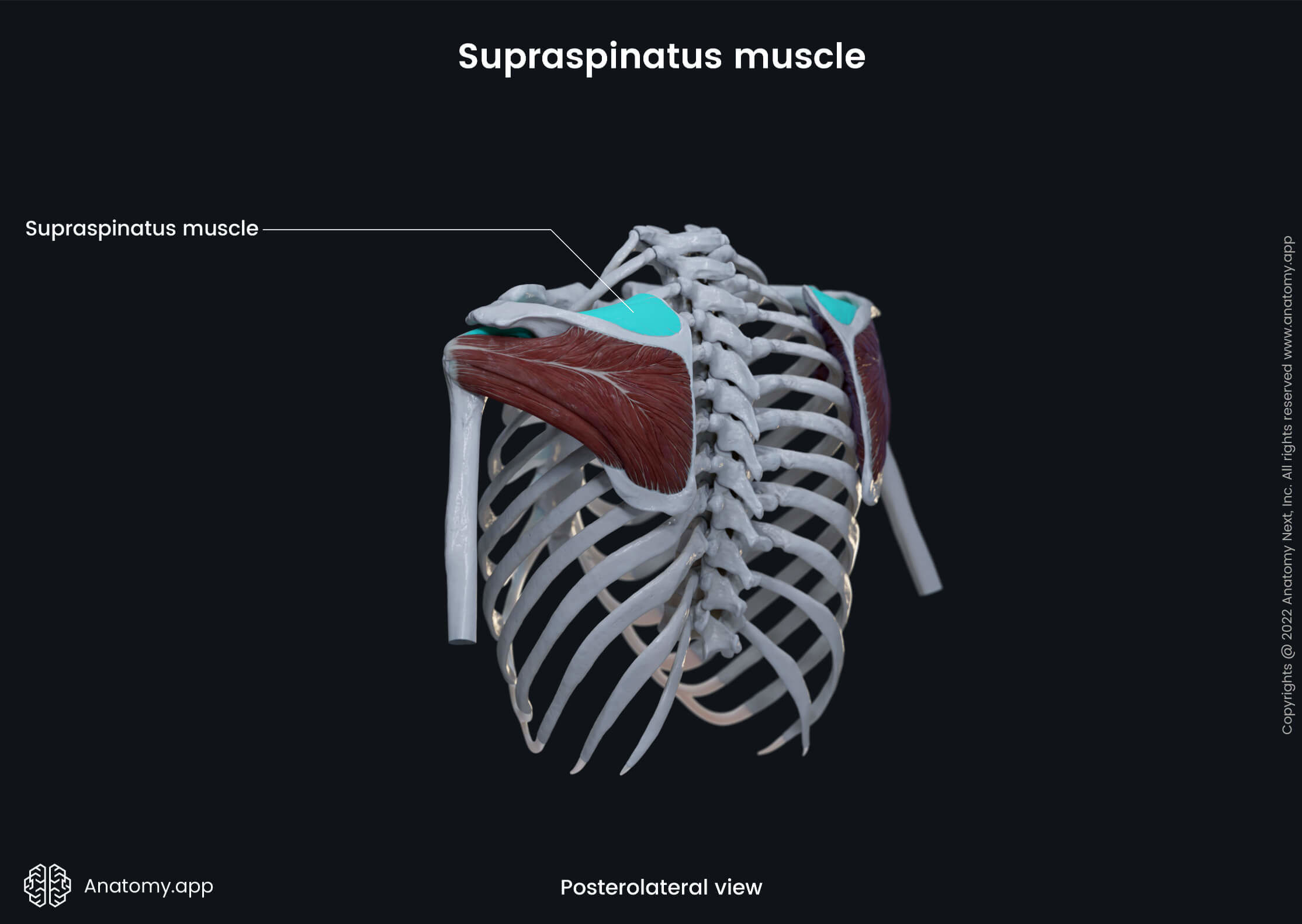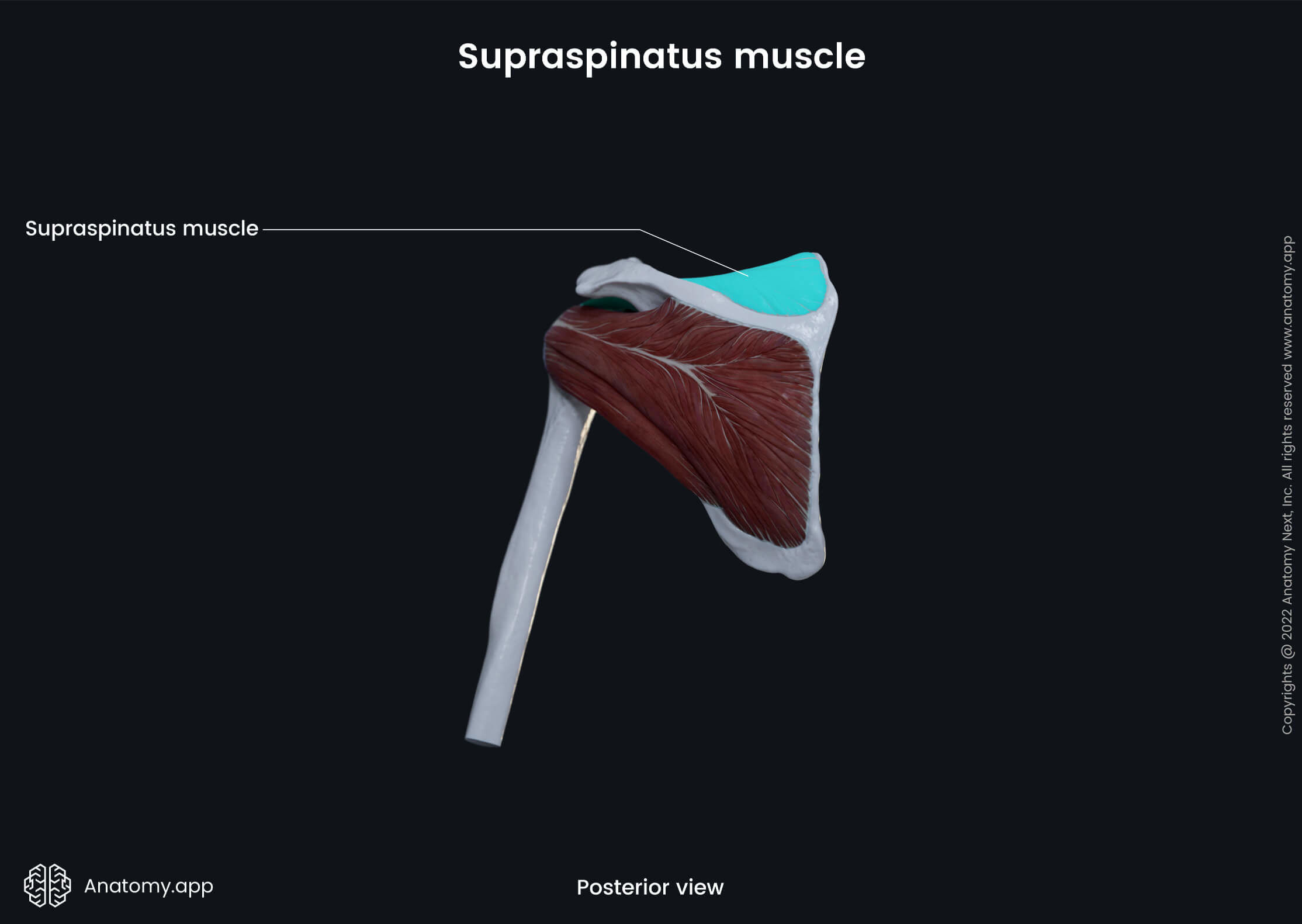- Anatomical terminology
- Skeletal system
- Joints
- Muscles
- Head muscles
- Neck muscles
- Muscles of upper limb
- Muscles of pectoral girdle
- Muscles of shoulder region
- Muscles of upper arm
- Muscles of forearm
- Muscles of hand
- Thoracic muscles
- Muscles of back
- Muscles of lower limb
- Heart
- Blood vessels
- Lymphatic system
- Nervous system
- Respiratory system
- Digestive system
- Urinary system
- Female reproductive system
- Male reproductive system
- Endocrine glands
- Eye
- Ear
Supraspinatus
The supraspinatus muscle (Latin: musculus supraspinatus) is a flat triangular-shaped muscle of the upper limb. It stretches between the upper posterior aspect of the scapula and the proximal part of the humerus. As the supraspinatus acts at the shoulder joint, it is one of the muscles of the shoulder girdle. Besides providing movements of the arm, the supraspinatus muscle also stabilizes the shoulder joint. Together with the infraspinatus, teres minor and subscapularis, it belongs to the rotator cuff muscles.
| Supraspinatus | |
| Origin | Supraspinous fossa of scapula |
| Insertion | Greater tubercle of humerus |
| Action | Shoulder joint stabilization, abduction of arm |
| Innervation | Suprascapular nerve (C5, C6) |
| Blood supply | Suprascapular artery |

Origin
The supraspinatus muscle originates from the supraspinous fossa located on the posterior surface of the scapula.

Insertion
The fibers of the supraspinatus pass laterally from the supraspinous fossa and insert on the greater tubercle of the humerus.

Action
The supraspinatus muscle provides abduction of the arm and stabilizes the glenohumeral (shoulder) joint.

Innervation
The supraspinatus is innervated by the suprascapular nerve that arises from the fifth and sixth cervical (C5, C6) nerve roots of the brachial plexus.
Blood supply
The arterial blood to the supraspinatus muscle is primarily supplied by the suprascapular artery - a branch of the thyrocervical trunk.